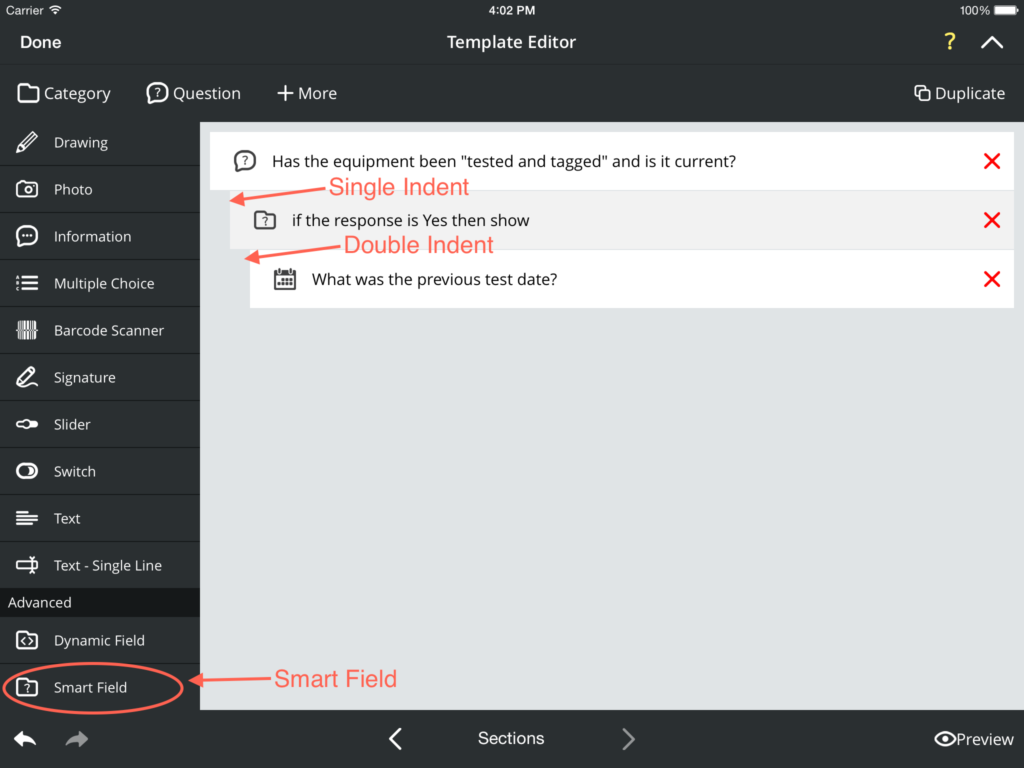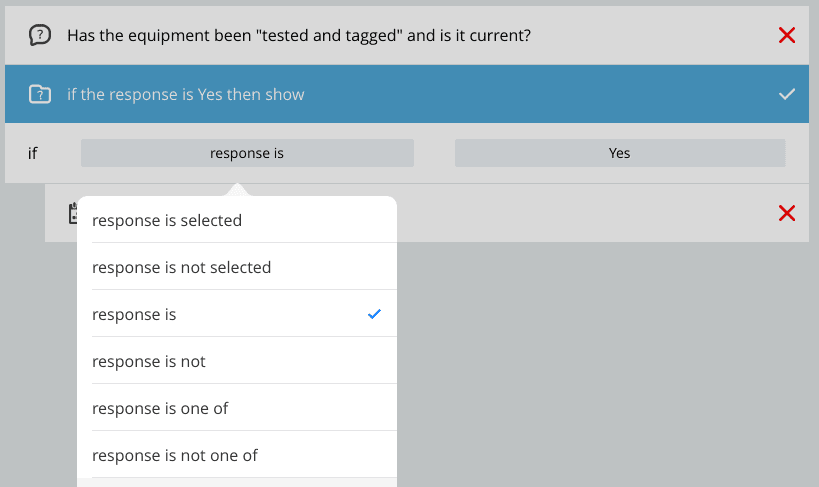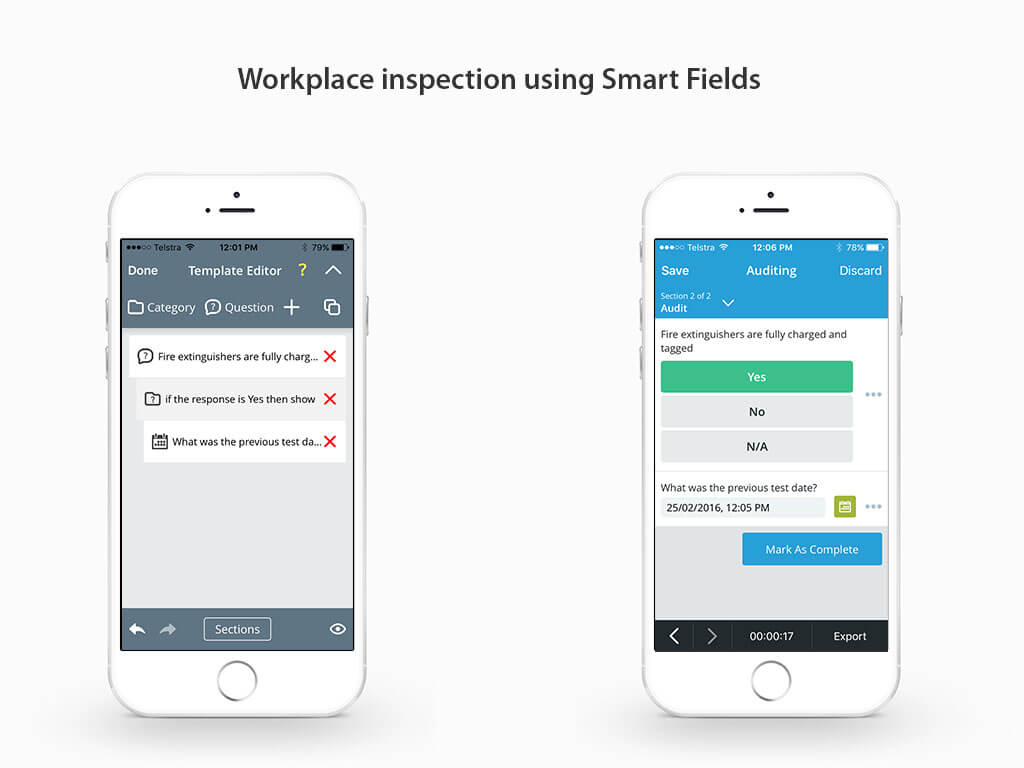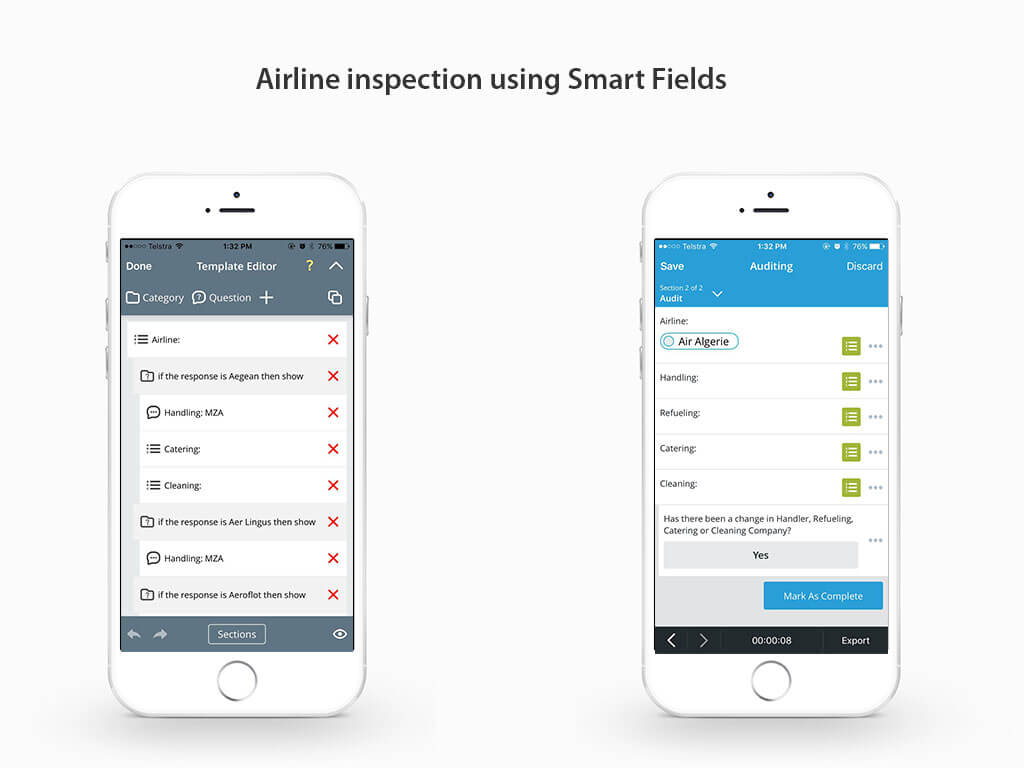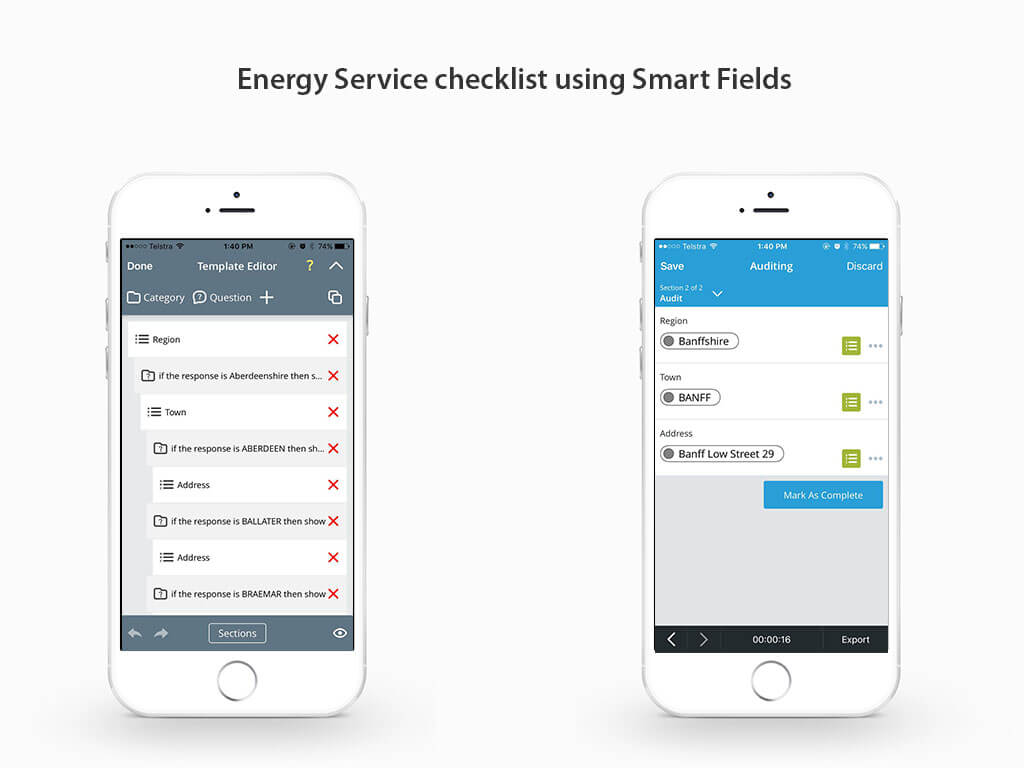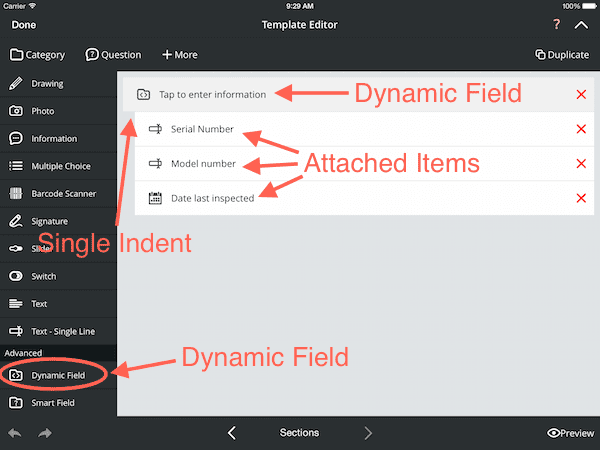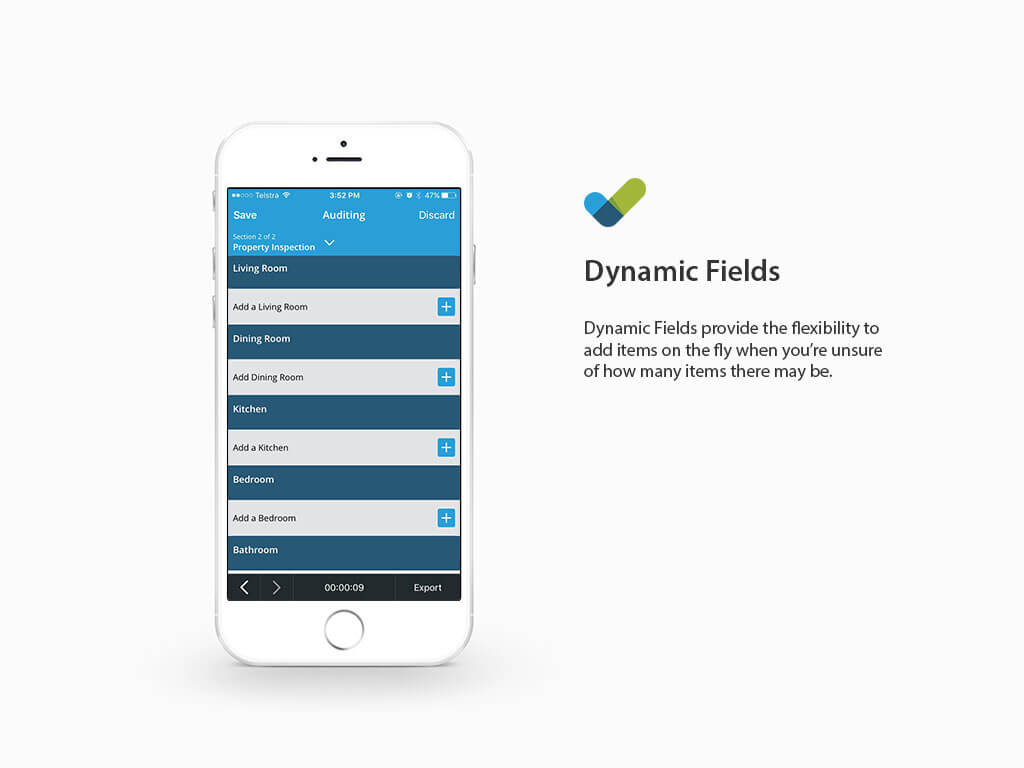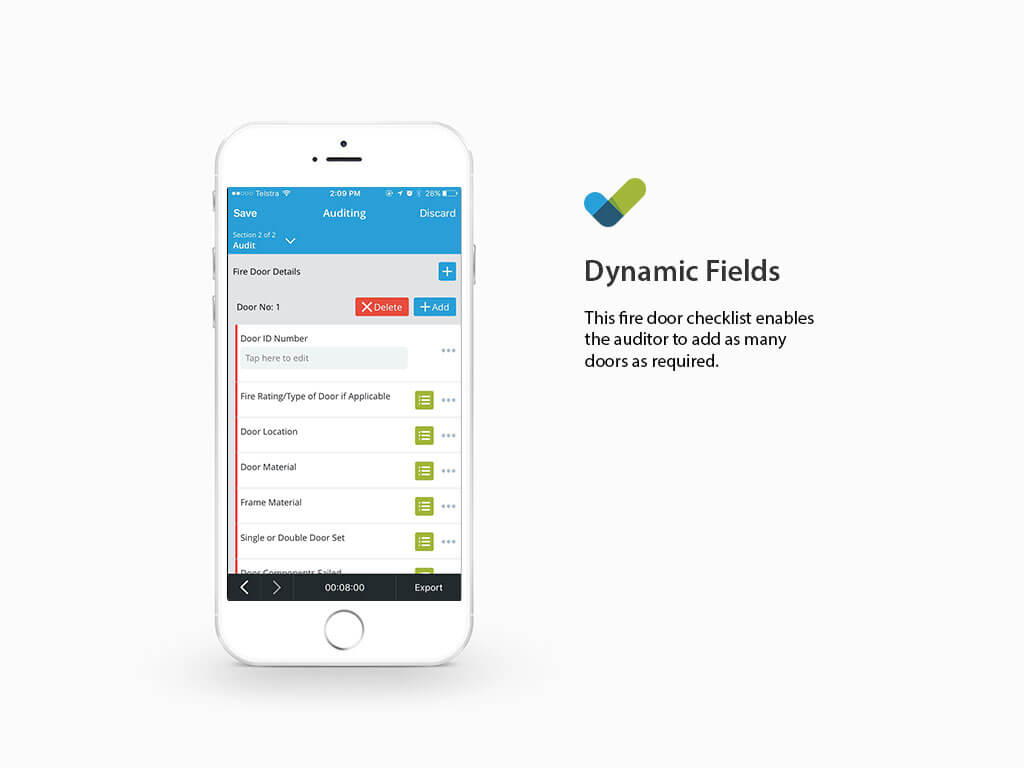Build Better Checklists: Smart Fields and Dynamic Fields 101
iAuditor by SafetyCulture Tips | By | 6 Apr 2016 | 5 minute read

You already know that SafetyCulture iAuditor allows you to build digital checklists and inspections. What you may not know is that it’s not just an ordinary checklist building app. It’s an app that gives you the ability to not only transform your auditing process, but to build intelligent checklists to change the way you inspect forever. In any given business day, simple tasks can become ginormous ones, which is why you’re probably using SafetyCulture iAuditor to keep on top of your auditing process.
There are two key features that will ensure you build powerful, intuitive and super intelligent checklists, guaranteed to save you time, take the stress out of conducting regular inspections and also make your workers’ lives easier.
Advanced Checklist Features
Smart and Dynamic Fields are the saving grace when it comes to making your inspections intuitive, faster and easier to complete.
Smart Fields allow you to add in a database of hundreds of questions and huge amounts of information without overwhelming the auditor. For example, you may have a database of questions and information concerning vehicles within your transportation fleet. However, the auditor reviewing a Commodore shouldn’t have to wade through questions and information about a 4wd.
The simple concept of a Smart Field gives you the ability to hide irrelevant information and guide the auditor in the right direction effortlessly.
Similarly, Dynamic Fields provide the flexibility to add items on the fly when you’re unsure of how many items there may be. For example, if you’re a property manager, every property you’re inspecting will be different. You will need a flexible and adaptable inspection checklist with you to add items such as the number of bedrooms or bathrooms, or even specific items like a bathroom safety checklist, as needed.
Smart Fields
Smart Fields provide a way to trigger further actions, information fields or questions from particular responses, and gives auditors the ability to follow a certain path within a template.
Why use smart fields
There are clear benefits to making intelligent checklists. Anyone can create a basic Yes/No checklist. It’s easy to convert a checklist from a paper format into a digital checklist. Simply digitizing paper checklists has its benefits; you’re able to quickly get visibility across your whole organization, you no longer have to enter data manually, and you carry this power within your mobile device rather than lugging around paper to each job site. While basic checklists are great, there’s more that can be done by leveraging these Smart and Dynamic Fields. That’s where the true power of SafetyCulture can be leveraged for your benefit.
How to use smart fields
Smart Fields eliminate unnecessary fields that your auditors see when they’re inspecting. If you’re a fire department performing an audit on the different types of trucks. You can set up a question that asks the auditor what type of truck they’re inspecting. If they choose a particular type of truck, they will only get questions associated with that truck type.
The use of Smart Fields gives template builders’ control over what action auditors must take, when a selected condition is met. By indenting a Smart Field under a Question field in your checklist, you can build a logical path to follow based on how auditors answer the questions.
The Smart Field will prompt you to choose the condition that will activate the field:
“if [response] is [answer] then show…”.
For example, when an auditor answers a question like “Did you use a smart field?” as “Yes” then show “What did you like about the Smart Field feature?”
Smart Fields can be used under any of the following template building features
- Question
- Check Box
- Multiple Choice
- Slider
- Switch
Tip: Make sure you nest your fields neatly under each Smart and Dynamic Field. See our Nesting article for more information.
Learn more about how to use Smart Fields.
Examples of Checklists Using Smart Fields
Workplace Inspection
In the example below the inspection only requires a response if the fire extinguisher has been fully charged and tagged. If the auditor selects ‘Yes’ they’ll need to provide the previous test date for their records. If the answer is ‘No’ the auditor can move on to the next appropriate question with ease.
Airline Inspection
London Heathrow Airlines required a checklist that allowed them to conduct turnaround audits on their flights. When they selected an airline, using this checklist they would know the correct handling, catering, cleaning, and fueling requirements for that particular aircraft.
Energy Service Checklist
Mitie Group PLC required a checklist that allowed their auditors to only display audit questions for their chosen region. As you can see below, the template has multiple paths depending on what response the auditor selects. We’ve selected the region of Banffshire, the town Banff and the corresponding address. On the right you can see how the template looks within the Template Editor. This checklist required hundreds of different paths, but the end result is an easy, intuitive checklist saving auditors hours of time in the field and ensures the responses received are uniform.
Dynamic Fields
Now you know what Smart Fields do, but what about Dynamic Fields? Smart Fields allow you to create a unique response set, but Dynamic Fields allow you to adapt your checklists on the spot by adding an unlimited amount of responses.
Why use Dynamic Fields
It’s not always possible to know how many of a particular item you will need at an inspection location. Dynamic Fields make this process easy. If you don’t use Dynamic Fields, you would have to manually enter the same set of questions for an unknown number of items. The Dynamic Field function allows you to enter in a set of questions once, and then replicate that question set as many times as required.
How to use Dynamic Fields
When placing a Dynamic Field within your template, you can name the field as normal, but you can also name the question set. The single indent below is how you nest under a Dynamic Field to ensure your questions are attached to it.
Tip: You can nest a Dynamic Field under a Smart Field, but you cannot nest a Smart Field under a Dynamic Field. To keep your template logical and clean, best practice is not to nest a Dynamic Field under a Dynamic Field.
Learn more about how to use Dynamic Fields.
Examples of Checklists using Dynamic Fields
Real Estate Checklist
Dynamic fields are vital if you’re a real estate company operating globally or locally like airbnb management sydney inspecting multiple properties. It would be a hassle to have an individual template for a 2-bedroom, 3-bedroom home and 4-bedroom home. By using Dynamic Fields, you can use the one template but add new items as needed.
In the below checklist, we developed a Property Inspection Checklist. The template is divided up by sections of the property that needs inspecting. If the property has two living rooms, you can simply add a living room as needed and inspect it. Or, if the property has three bedrooms, simply click “Add Bedroom” for your desired amount.
Similarly, in industries like real estate where each client and property comes with its own set of variables, using dynamic fields helps manage data effectively. For real estate professionals looking to consolidate their operations, utilizing a top CRM for realtors provides a systematic way to track leads, customer interactions, and site visits, aligning closely with the efficiency benefits mentioned.
Fire Door Inspection Checklist
Before using SafetyCulture iAuditor, Door Check Limited used a simple paper checklist in a table style format. With Dynamic Fields, the company is now able use an intelligent checklist to complete their fire door inspections by adding as many fire doors as required.
Gone are the days of basic checklists. Be a master of your inspections by creating super intelligent checklists using Dynamic and Smart Fields to make at least one aspect of your job a little easier.
Important Notice
The information contained in this article is general in nature and you should consider whether the information is appropriate to your specific needs. Legal and other matters referred to in this article are based on our interpretation of laws existing at the time and should not be relied on in place of professional advice. We are not responsible for the content of any site owned by a third party that may be linked to this article. SafetyCulture disclaims all liability (except for any liability which by law cannot be excluded) for any error, inaccuracy, or omission from the information contained in this article, any site linked to this article, and any loss or damage suffered by any person directly or indirectly through relying on this information.
